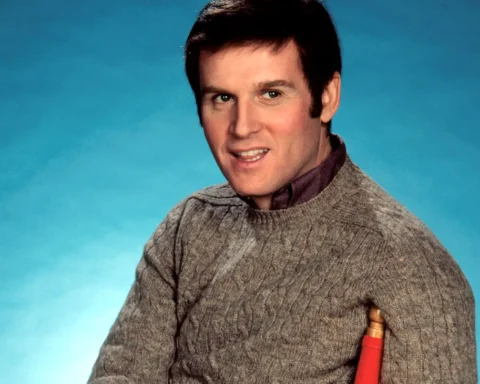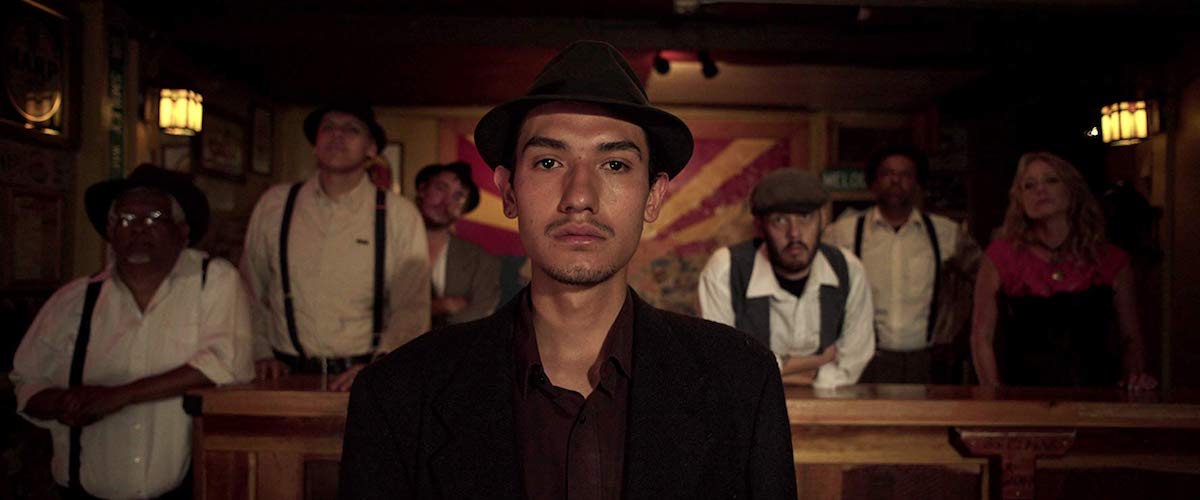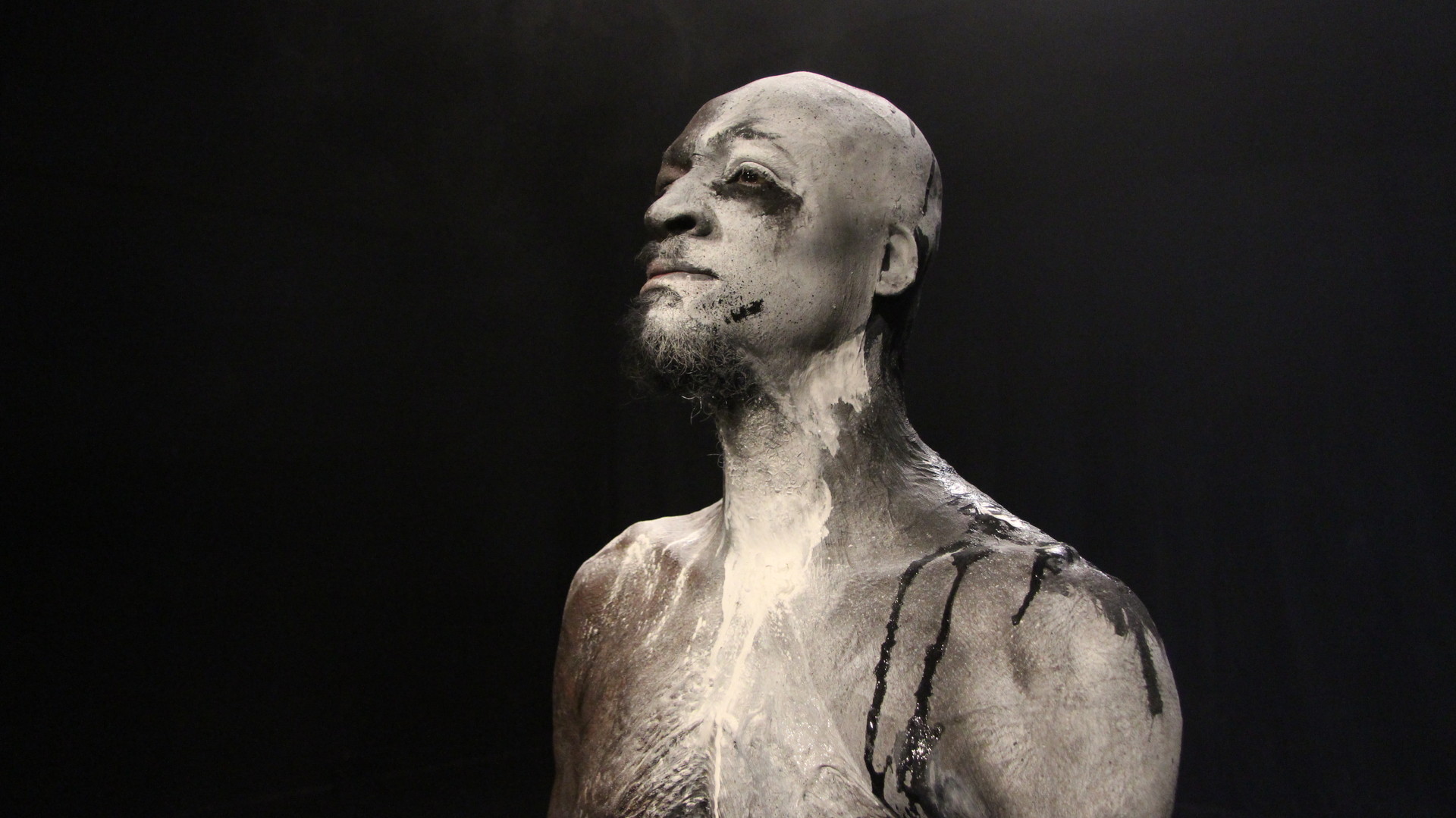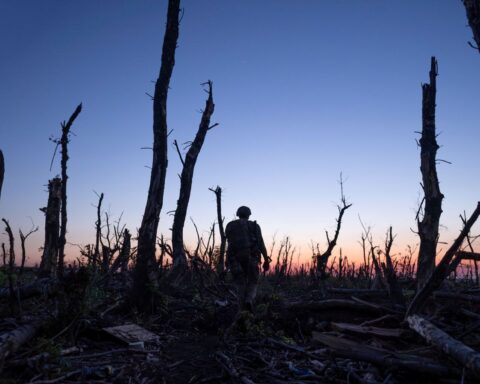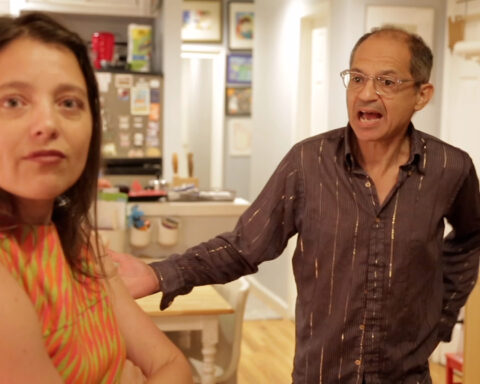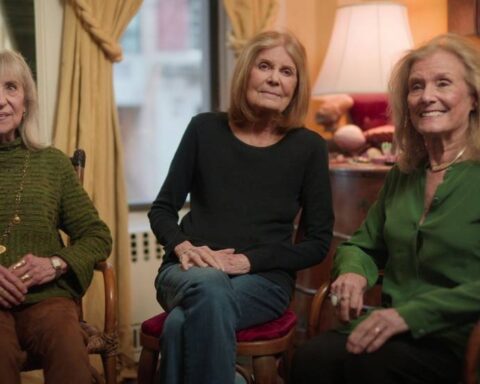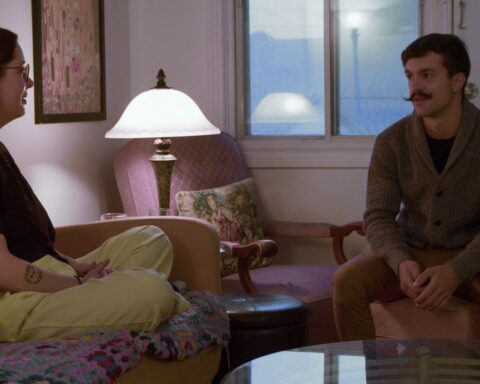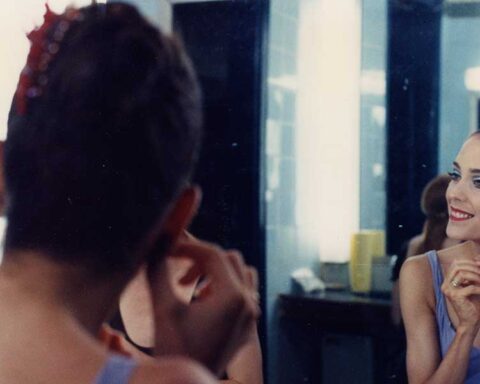TIFF’s annual Wavelengths programme is one of few opportunities for Torontonians (and Canadians) to see work on the bleeding edge of film aesthetics in such a concentrated burst. It’s also, I would argue, one of the city’s few truly world-class cultural events, and that’s thanks to Andréa Picard, the section’s programmer for the past 13 years. Picard travels the world, maintains relationships with filmmakers and other curators and watches an unimaginable amount of film, and we see the product of that work each year: an impeccably selected array of works that remind us (and it’s easy to forget) of cinema’s potential to make aesthetic statements that have true gravity. We caught up with Andréa for a preview of what’s on offer in this upcoming edition of Wavelengths, and to hear about what she’s been up to since last September.
TP: Tyler Prozeniuk
AP: Andréa Picard
TP: I want to ask you mostly about Wavelengths, but I’m curious also about your experience at Cinéma du Réel, where you took over as artistic director this past year. Any highlights? Lessons learned?
AP: I learned a lot. I was working in a totally different political and cultural climate, and joining a big organization that’s affiliated with a very large museum [the Centre Pompidou] as well—it was a lot to jump into within a few months, and I did it immediately after TIFF. One of the biggest challenges was celebrating the 40th anniversary of such a well-established festival. As you know, it was co-founded by Jean Rouch and started off as an ethnographic film festival, which gradually developed into a documentary festival that included more art docs or hybrid docs. I had Nicole Brenez, a film theoretician and teacher who has taught at the Sorbonne and has for a long time curated the experimental section at the Cinématheque Française, and filmmaker Nicolas Klotz curate a 40th anniversary sidebar for the festival. I felt that it was, in a way, not my place, and they had the history of the festival. They created an homage to the festival by asking other filmmakers to present films that were important to them. We had John Gianvito come and present a film by Patricio Guzmán, and Patricio was there, which was really special. Valérie Massadian and Claire Atherton, who was Chantal Akerman’s long-time editor, presented Akerman’s Sud. We also published a very large, bilingual book called Qu’est ce que le réel, with contributions from 43 filmmakers. It was a huge honour for me to work on that, with people like Roberto Minervini and James Benning, as well as Luc Moullet and others from the French sphere.
TP: You put together some other great-looking retrospectives there, as well.
AP: We did an Ogawa Productions retrospective in partnership with the Jeu de Paume and programmed by Ricardo Matos Cabo, and I worked with Federico Rossin, who is one of the best film curators in the world today, on a retrospective on the occasion of the anniversary of May ’68. Federico and I met last year at the Locarno Film Festival to plot out what we could do in face of the celebrations, and what we decided to do was to show the international repercussions of that movement, and show how it wasn’t just French, because we knew there would be so many French events. So, we did 12 or 13 programs of films from around the world—Palestinian, Japanese, Brazilian. The African filmmaker Sarah Maldoror showed up at the screening of her film Monangambee as a surprise, and she was treated as a superstar with a standing ovation—that was really beautiful. And, speaking of celluloid, I worked with Rachael Rakes on a big Tacita Dean retrospective, which was fantastic because her gallery struck brand-new prints of all the 35 and 16mm anamorphic films. It was a total treat to see them from start to finish in a cinema. Tacita came for the opening weekend and was in dialogue with French art historian Patricia Falguières. The two of them were very funny together. There were a lot of very special events, and so many guests. It was really lively.
TP: In this year’s Wavelengths programme, you have three of the biggest names in contemporary documentary cinema—Sergei Loznitsa, Roberto Minervini and Wang Bing. Could you tell us a bit about what to expect from each of them, and about what attracts you to their work?
AP: As you mention, they are three of the most important voices in documentary film, and all three of them could be in the Masters programme as well, but we decided to put these three films in Wavelengths for aesthetic reasons, as well as political reasons, and just because we think it’s the best fit for the films themselves. Wang, Minervini and Loznitsa have all had great experiences with audiences at Wavelengths before, so they show a real affinity to the programme, and I’m very proud of that.
Dead Souls premiered at Cannes, and I think it’s one of Wang Bing’s most important films. It’s very long—eight hours and 15 minutes—and it’s a film that really works on its length. It’s a devastating chapter in Chinese history that he has gone back to a couple of times, and in fact the footage for this film was initially compiled as research for his fiction film The Ditch, which was shown at TIFF in 2010. As the subjects (survivors of a Chinese “re-education” camp) started passing away, I think Wang Bing realized that the material itself was important to present to a public. It’s exceedingly moving, and it builds in a cumulative manner. It’s a series of interviews, basically, with stories of survival and resistance. It’s a film that deals with unbelievable evil, but also unbelievable strength and humanity to continue to want to live. So, it builds this cosmic dimension, but it’s also so physical, even though you’re watching people in modest settings just describing what they went through. But it’s almost worse than that—when you withhold certain images, you build them in your mind, and so you become an active participant in building that devastating landscape. And it’s incendiary—it’s an indictment of China and the Communist Party in a really big way, and Wang Bing has never shied away from those topics.
Roberto Minervini’s What You Gonna Do When the World’s on Fire? was one of my most anticipated films of the year, and it has, in my opinion, the best title of any film this year (derived from a famous gospel song by the Birmingham Jubilee singers). It’s also one of the most urgent and moving films I’ve seen, chronicling micro and macro examples of white supremacy and racism in the American South, as well as extraordinary human resilience and sense of community. Minervini is one of today’s most talented filmmakers, unafraid to delve into tough subjects and to find the right proximity in order to make trenchant work that is sometimes provocative and controversial, and always affecting and resonant.
Loznita is back at TIFF with two films this year, Donbass [a fiction film screening in the Contemporary World Cinema section] and The Trial [a found-footage film screening in Wavelengths]. Consistently and impressively working between fiction and documentary, his found footage work is among the best in the field and in his own filmography, I’d say. This new film is closest in tone and style to The Event, which screened in Wavelengths a few years back, and is entirely comprised of footage from a 1930s show trial masterminded by Stalin in Moscow. Visually, it’s a fascinating and suspenseful watch—the epitome of a courtroom drama as if shot in a silent-era sound studio—but it is absolutely terrifying, and awfully prescient in an era of dictatorial regimes and false democracy often tied to the media. One only has to look at the cover of The New York Times today to see connections.
TP: In addition to the very long Wang Bing film, you have La Flor, a 14-hour, three-part mega-feature from Argentine director Mariano Llinás, which won best film at Buenos Aires. Can you sell the film to readers who might not be familiar with his work?
AP: Marino Llinás is a cult figure in Argentine cinema. He became known to an international audience when he showed Extraordinary Stories in Rotterdam. That film was also very long—about four and a half hours—and it did very well. He really takes a pleasure in cinematic storytelling—very inventive, very funny, very wry. Marino has been working on La Flor for over ten years. He works within a collective, with a producer and cinematographers and a number of theatre actresses, a number of whom have also worked with Matias Piñeiro.
This film was shot over ten years, on four continents, totally made outside of the system—it’s self-funded, with the help of the University of Buenos Aires, and it’s basically done out of goodwill and fun. It’s an ode to the history and genres and styles of cinema, going through the travails of cinema production in a very funny way. It’s told in six parts with various chapters and episodes, and he also builds in intermissions because it’s a play on the traditional filmgoing experience. He designed it so that it would take a full weekend to watch with the idea that cinema builds a community—you watch things together, you get to hang out together and discuss things together. And there are so many references, whether it’s to Hugo Santiago or to Renoir and the whole history of French cinema and silent cinema. All of the interlocking episodes are basically acting exercises for these four amazing female actors who embody different characters. It goes through various genres—melodrama, spy film, western—and he turns it all on its head in a really playful way.
TP: You also have Bi Gan’s new film, Long Day’s Journey Into Night, which many people will be looking forward to on the promise of his first film, Kaili Blues. How does the new film compare to it?
AP: There are some comparisons, but it’s very different as well. Kaili Blues was a big surprise. It really put Bi Gan on the map. Kaili is where the filmmaker is from, and with this film he returns there. It’s sort of a prodigal son, homecoming tale—the lead character goes back for his father’s funeral, but he’s really haunted by a former love. If you’ve ever read an interview with Bi Gan, you know that he’s a huge cinephile, and he’s exceedingly literate—he knows painting, he knows literature—but mainly he loves cinema. And this film, like Mariano Llinás’, is based in cinema. So you’ll have, for instance, a direct quote of a moment from Tarkovsky’s Stalker. You’ll notice there’s a very European vibe and atmosphere, but it’s also really sexy, like Wong Kar-wai’s In the Mood for Love, especially in the textures, the lacquers, and the colours. There’s a bit of Hou Hsiao-hsien or Tsai Ming-liang, so it sort of has that Asian art veneer, but it’s very inventive, very surprising and a little confusing. It really plays out like a dream. I suppose the biggest difference is between how the two films look—this is a much bigger-budget production, so he has stars like Sylvia Chang. I would say there’s both a modesty and an extravagance at the same time. The second part is in 3D, and it’s a technically virtuosic feat.
TP: There are two Canadian films in the features—Andrea Bussmann’s first solo feature, Fausto, and Igor Drljaca’s The Stone Speakers. Can you tell us a bit about those?
AP: I’m really happy with the Canadian selections. It’s really great to have two features as well. As you mention, this is Andrea’s first solo feature—she co-directed a feature Tales of Two Who Dreamt with Nicolás Pereda, her partner, previously—and this one is very in keeping with Andrea’s interest in hybridity. It’s a play on the Faust myth, but transposed to a beach in Oaxaca. It’s very lyrical and extremely beautiful, shot on 16mm with non-professional actors. At times, you could describe it as an exercise, but it’s more than that, because it’s so sensual. It deals with the devil and mythology, but there’s also a very cosmic landscape aspect to it. I’m looking forward to seeing it on the big screen, because I think that that’s where it’s really going to come alive. It has an intellectual level as well, dealing with histories in Mexico through literature and symbolism. And the performances she gets from the locals are really amazing—they’re so unaware of the camera, but then there’s also direct address, so she’s breaking all kinds of rules and making a really unique work of cinema. She’s living in Mexico right now, so this will also be a sort of homecoming for her.
Igor has shown several films in the festival before, including shorts and features, but this is his first long-form documentary film. I’m really happy to have the world premiere. It’s stunningly shot, so I hope I have the time to see it on the big screen. It was shot in Bosnia-Herzegovina, and it deals with something quite complicated while employing a lot of humour. It deals with efforts to revitalize the country through tourism in the aftermath of the war. There’s been a mini-boom in tourism there, partly because the landscapes are so beautiful, but also for different reasons—there was a supposed sighting of the Virgin Mary, for instance—and Igor takes this trenchant, wry look at tourism and what people flock to. There are small moments of humour—it’s quite clever—but it’s also about competing national identities, and how you can change the chronology of a national history through contemporary tourism.
TP: In addition to the two Canadian features, there are also shorts by Lina Rodriguez, Rolla Tahir, Celia Perrin Sidarous and Malena Szlam.
AP: I love all of them—it’s great to see so many women in the program as well. Malena Szlam is someone I’ve shown before—she’s from Chile originally, but she lives in Montreal, where she’s part of the Double Negative film collective. Malena shot this film in Argentina on 16mm, and it’s a sort of follow-up to a previous film called Lunar Almanac in which she studied the sky and eclipses. This film uses similar techniques, but also includes salt flats and volcanic deserts, as well as a lot of field recordings. She’s just blown the print up to 35mm, so I think it’s going to be really spectacular on the big screen.
Lina Rodriguez is from Colombia originally, and oscillates between shorts and features, and used to do performances as well. She made this film in Colombia and shot it on Super 8—it’s very grainy and has this amber tinge to it—and it’s basically an environmental film dealing with how Lake Guatavita has been preserved and protected by the locals. Like Andrea Bussmann’s film it incorporates mythology, linking it with the legend of El Dorado.
Rolla Tahir’s film was part of a commission by LIFT (Liaison of Independent Filmmakers of Toronto), who asked several filmmakers to produce works based on found footage shot by Jacques Madvo, a filmmaker who has a very interesting past. I think LIFT was very ingenious in commissioning these films based on that footage. It’s a found footage film, but it also becomes very personal and traces a story of immigration to Canada. And then we have another female filmmaker, Celia Perrin Sidarous, who is Montreal-based. I first came to know her work through the Montreal Biennial. She works on celluloid, but also incorporates sculptural elements and photography within her exhibitions. This will be the first time she will be showing a film in a film festival environment, so she’s very excited about that.
TP: There are several other quite familiar names more on the experimental than the documentary end—James Benning, Nathaniel Dorsky, Apichatpong Weerasethakul and Ben Rivers. Could you comment on those and what keeps you interested in their work?
AP: They’re all filmmakers for whom I have a tremendous amount of admiration, and they’re all filmmakers who are very prolific, but continue to make films of very high quality.
James Benning hasn’t been to the festival in a really long time, actually—I don’t think he’s been here since Ruhr (2009)—and L. Cohen I think is an amazing work of art. It’s both a film and an installation, and it won the grand prize at Cinéma du Réel this year. I had seen it as an installation in Berlin, but it had a completely different impact in the cinema, and in fact over a thousand people came in Paris. It was a huge success there. It’s a 45-minute one-take film that he shot in Oregon in a farm field. I don’t want to give too much away, because there’s something really spectacular that happens during the film, that also happens to the viewer of the film if they’re really focused in on it. It’s very contemplative—it is one take, but of course in all of James Benning’s films there are tiny little details that happen either in the sound or in the natural phenomena. This one starts off as what he would call an ordinary day, and then it becomes special, and then it becomes extraordinary. Towards the end of it, you are really transformed. For me, it’s like taking the time to look at a beautiful painting that moves you tremendously, and then when you walk away you feel like a different person. He dedicated the film to Leonard Cohen for a very special reason, and you’ll see once you see the film. We’re doing something a little special where we’re presenting it in Cinema 1 at the Lightbox, which has 500 seats. It’s one show only and it’s going to be projected very, very large. Preceding that, we’re going to be showing a 70mm short film by Björn Kämmerer, a German artist whose work we’ve shown before. He works only on celluloid, and his work is very much about the film apparatus.
Apichatpong’s film (titled Blue) is sort of an extension of his live performance work, as seen in his recent Fever Room performances. He is working again with Jenjira Pongpas, the lead actress is many of his films, and expanding on his exploration of sleep. I don’t want to give away too much, because it’s very simple—it’s only 12 minutes—but it’s exceedingly beautiful. I think it will be a nice surprise for people. I don’t think a lot of people knew that Apichatpong was working on this film—I was sort of tipped off to it while I was in Paris, as it was a commission from the Opéra national de Paris, which has been commissioning short films from filmmakers for the last couple of years and putting them online. There is a really great one they did with Bertrand Bonello a couple of years ago, which is how I found out about it.
We’re really thrilled to have Dorsky’s work return to Wavelengths. This latest film, Colophon, is both a coda and a new work relating to a cycle of films called “The Arboretum Cycle.” Typically lush and stunning, shot on 16mm and projected at 18fps, this one is somewhat surprising, as he diversifies his technique. The film is split into 3 sections, moving from LED lights to leaves, and it is a soothing sight to behold.
Ben Rivers has been to Wavelengths numerous times with shorts, solo and co-directed features with Ben Russell. Not unlike Dorsky’s Colophon, TREES DOWN HERE is both a departure and continuation of Rivers’ style and motifs. The owl recurs, but here an interest in architecture and archives proves to be mysterious, evocative, and conjuring of the past. It also includes the voice of John Cage and John Ashbery, and was previously shown at the Venice Biennale of Architecture.
TP: Finally, what are some new (or relatively new) names in the programme that you’re particularly excited about?
AP: Ross MeckFessel, Karissa Hahn, Natalia Marín, Simon Liu, and Elena López Riera are definitely ones to keep a close watch on, sure to continue to make great work into the future. In fact, Elena López Riera has just been selected for Cannes’ prestigious Cinéfondation programme and is working on her first feature. I’d also like to highlight the talented and energetic American experimental animator Jodie Mack, who has screened in Wavelengths previously but who will be presenting her first feature The Grand Bizarre this year, along with an amazing new short called Hoarders Without Borders. The Grand Bizarre is colourful, trippy, inventive, and the result of so much work. Meticulously shot frame by frame, it is a stunning and rhythmic patchwork of images exploring patterns and textiles and globalization. It’s also as fun as it is clever, and strangely infectious. As the film progresses, the sophistication of the work’s structure reveals itself as both journey and pattern and it’s definitely going to pop on the big screen projected on celluloid—itself a serial, material pattern.
TIFF runs Sept. 6 to 16. Stay tuned to the POV TIFF Hub for more coverage from this year’s festival.





